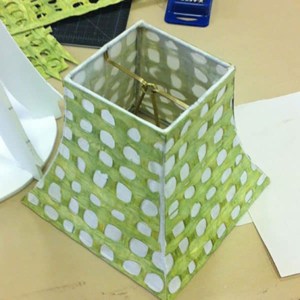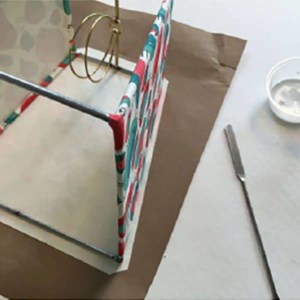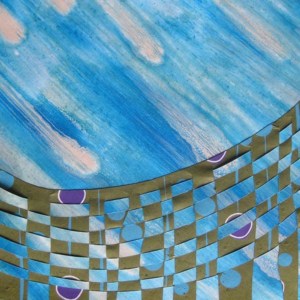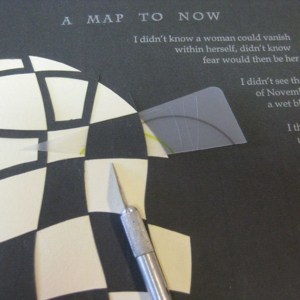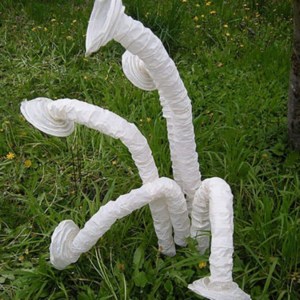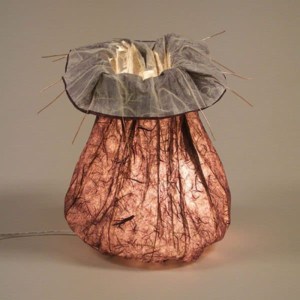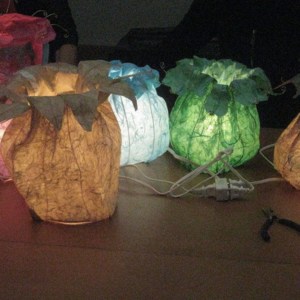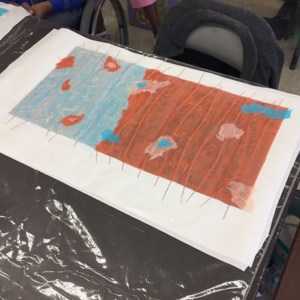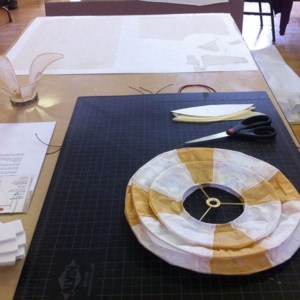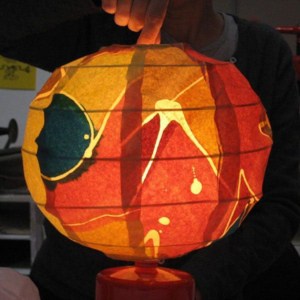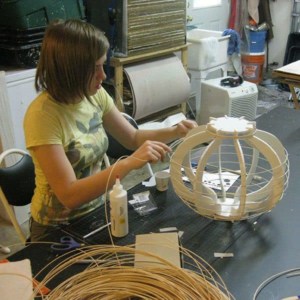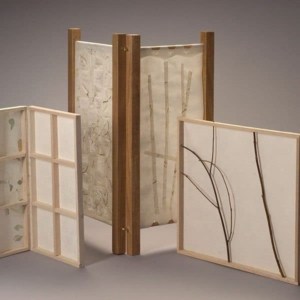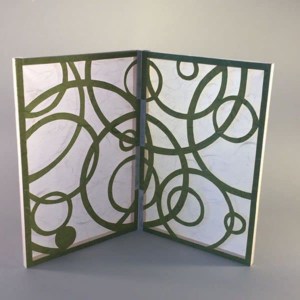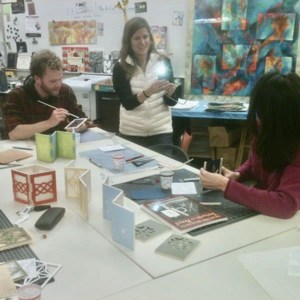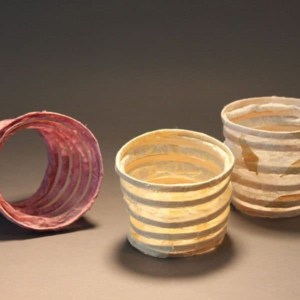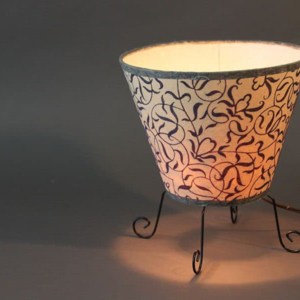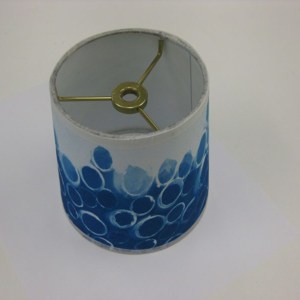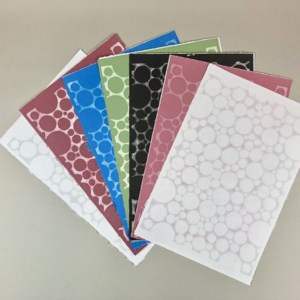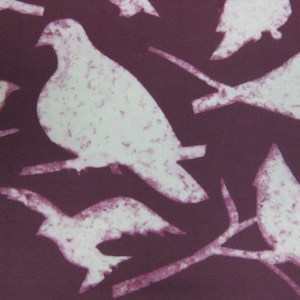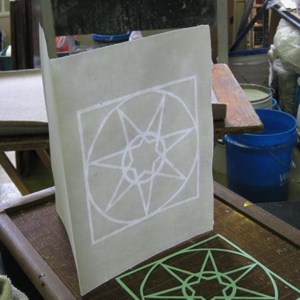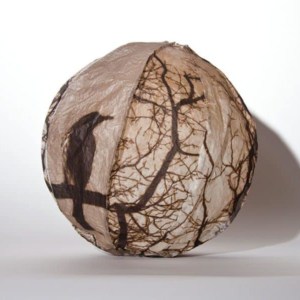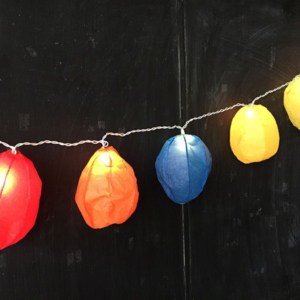Below are examples from some of the papermaking and lampmaking workshops I offer internationally. One or more projects can be grouped to create classes ranging from a half-day workshop to a weeklong experience. Please contact me if you are interested in inviting me to teach at your institution, library or arts center. I am happy to develop a custom program for you.
The images below feature some of my work as well as work by students.
Panel Shades
Construct a pattern and cover a wire framed shade panel by panel. The skills you acquire can be applied to covering other types of armatures.
Paper Weaving
Weaving paper is much faster than weaving cloth, and with so many decorative papers out there, it is both fun and easy to come up with a multitude of paper combinations.
Abaca, the Incredible Shrinking Sculptural Material
Handmade paper is a wonderful, lightweight material perfect for creating low relief and three-dimensional objects. Spend one day placing embedded wire, string, and reed between wet sheets of high-shrinkage abaca and return the next day to find it magically transformed into dry, structural paper shapes for building. Further manipulate the dry sheets into forms ranging from sculptural objects to lamps and lanterns. Experiment with glue, thread, wire and other fasteners to create unique paper objects.
Bendable Paper Lamps
Make a paper laminate with embedded wire and then bend it to create sculptural shapes and learn how to wire a lamp.
Japanese Chochin Lights
Learn how to make a unique reusable armature that is covered with paper and then collapsed and removed.
Paper Screens
Create a lattice framework using balsa wood and back it with paper. Connect panels with a clever Japanese hinge that bends in both directions, allowing the structure to convert into a box-shaped lantern.
Collapsible Lanterns
This is an adaptation of the traditional Japanese Chochin Lights. A simple reed armature is wrapped around a readymade form, paper is collaged and the form is removed.
Wraparound Shades
Apply paper to a rigid backing material and then join the arc shape to a top and bottom ring. Use the techniques you learn to re-cover existing shades, garage sale, or antique store finds.
Watermarks
A watermark is a translucent design which is incorporated into a sheet of paper when it is made and becomes visible when the dry sheet is held up to light. Traditionally, watermarks were made by bending wire to create an image, such as a logo, in wire and sewing it onto the papermaker’s mould. This is still done with machine-made papers today, but watermarks are produced in multiple and are soldered to a wire roll. Since the wire is raised above the mould’s surface, the paper made on the watermarked mould is actually thinner where the wire is and a regular thickness everywhere else. This variation in the paper’s thickness makes the watermark more translucent than the rest of the sheet. After being pressed and dried, the variation in thickness is not apparent, but when held up to the light, the image becomes visible.
Inflatables
Create a series of flat panels, glue them together as an accordion and then bring them into the round and inflate. Create a variety of shapes and sizes yielding sculptural or illuminated objects.


